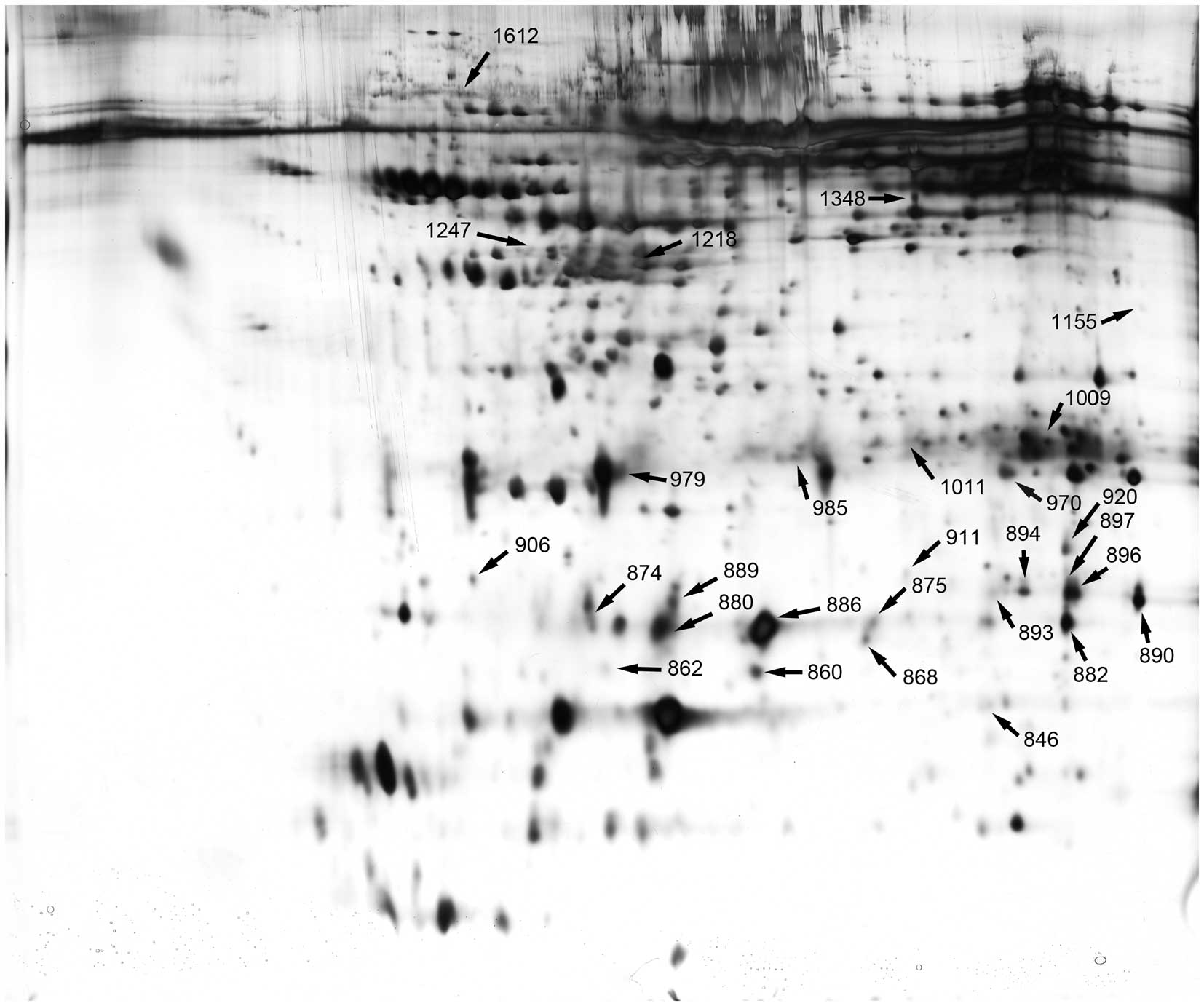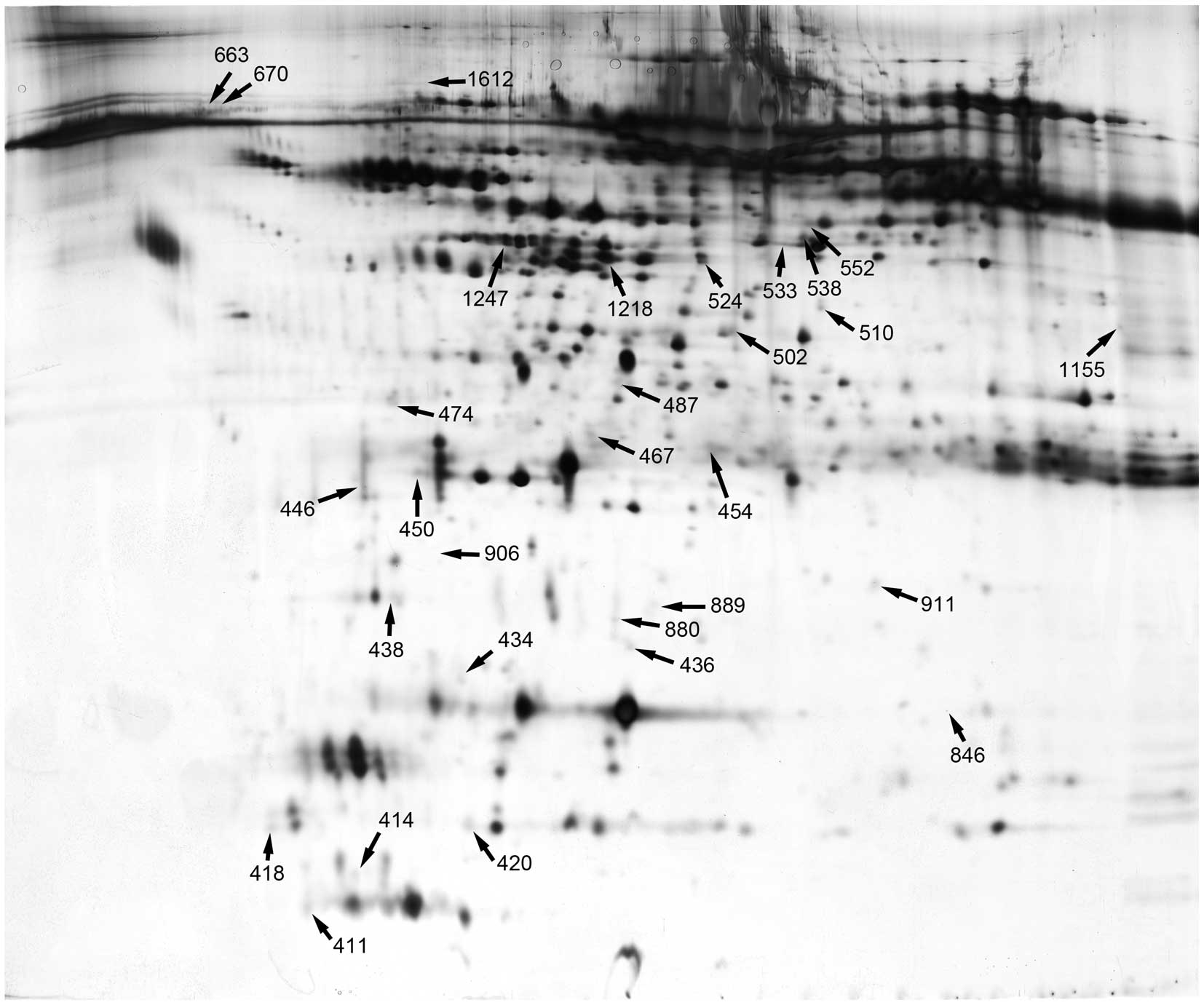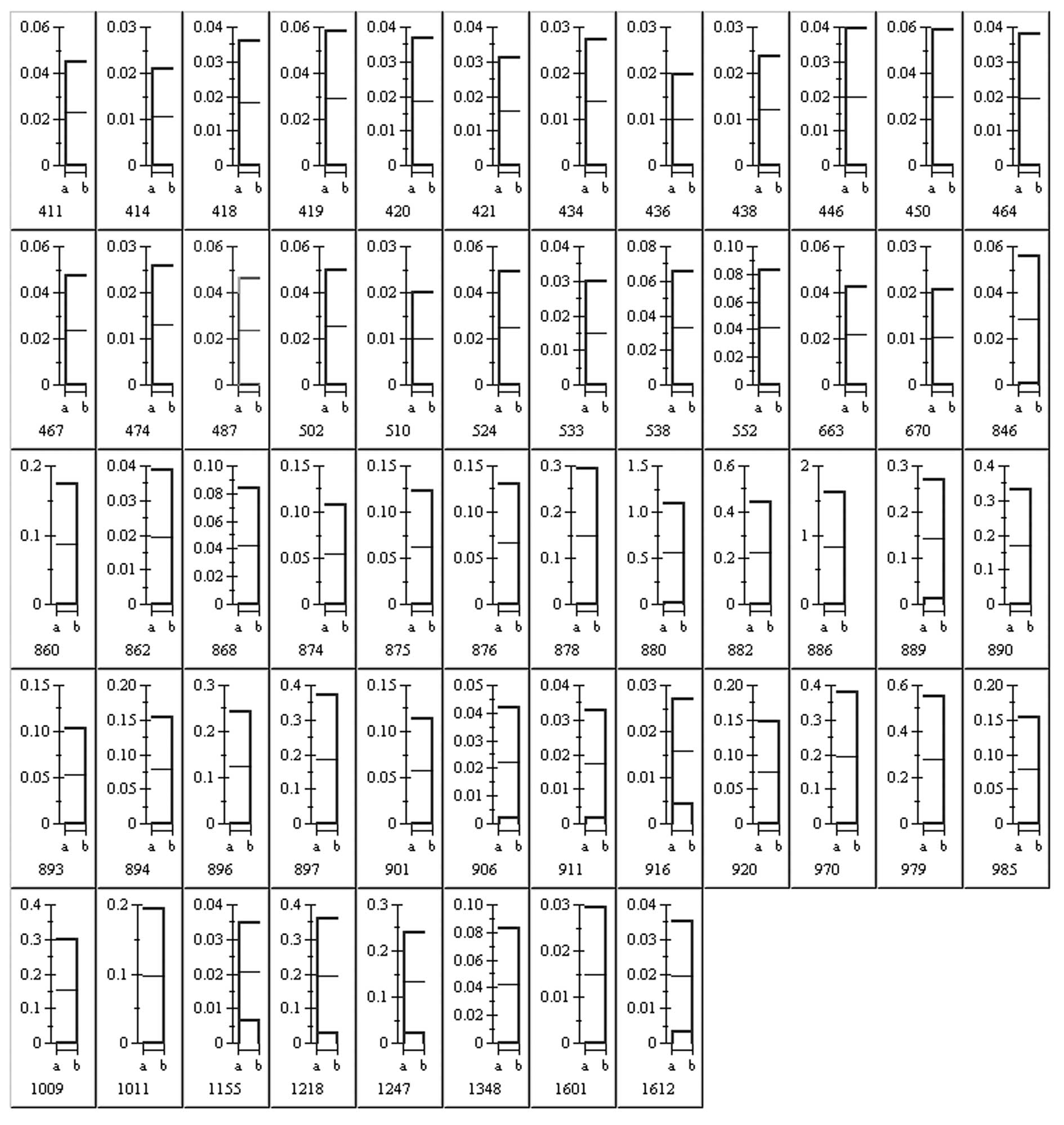|
1
|
Lim JW: Intravitreal bevacizumab and
cytokine levels in major and macular branch retinal vein occlusion.
Ophthalmologica. 225:150–154. 2011. View Article : Google Scholar : PubMed/NCBI
|
|
2
|
Rogers S, McIntosh RL, Cheung N, et al:
The prevalence of retinal vein occlusion: pooled data from
population studies from the United States, Europe, Asia, and
Australia. Ophthalmology. 117:313–319. 2010. View Article : Google Scholar : PubMed/NCBI
|
|
3
|
Zhou JQ, Xu L, Wang S, et al: The 10-year
incidence and risk factors of retinal vein occlusion: the Beijing
eye study. Ophthalmology. 120:803–808. 2013.PubMed/NCBI
|
|
4
|
McIntosh RL, Mohamed Q, Saw SM and Wong
TY: Interventions for branch retinal vein occlusion: an
evidence-based systematic review. Ophthalmology. 114:835–854. 2007.
View Article : Google Scholar : PubMed/NCBI
|
|
5
|
Noma H, Funatsu H, Yamasaki M, et al:
Pathogenesis of macular edema with branch retinal vein occlusion
and intraocular levels of vascular endothelial growth factor and
interleukin-6. Am J Ophthalmol. 140:256–261. 2005. View Article : Google Scholar : PubMed/NCBI
|
|
6
|
Duan X, Lu Q, Xue P, et al: Proteomic
analysis of aqueous humor from patients with myopia. Mol Vis.
14:370–377. 2008.PubMed/NCBI
|
|
7
|
Chowdhury UR, Madden BJ, Charlesworth MC
and Fautsch MP: Proteome analysis of human aqueous humor. Invest
Ophthalmol Vis Sci. 51:4921–4931. 2010. View Article : Google Scholar : PubMed/NCBI
|
|
8
|
Richardson MR, Segu ZM, Price MO, et al:
Alterations in the aqueous humor proteome in patients with Fuchs
endothelial corneal dystrophy. Mol Vis. 16:2376–2383.
2010.PubMed/NCBI
|
|
9
|
Funding M, Vorum H, Honore B, Nexo E and
Ehlers N: Proteomic analysis of aqueous humour from patients with
acute corneal rejection. Acta Ophthalmol Scand. 83:31–39. 2005.
View Article : Google Scholar : PubMed/NCBI
|
|
10
|
Izzotti A, Longobardi M, Cartiglia C and
Sacca SC: Proteome alterations in primary open angle glaucoma
aqueous humor. J Proteome Res. 9:4831–4838. 2010. View Article : Google Scholar : PubMed/NCBI
|
|
11
|
Duan X, Xue P, Wang N, Dong Z, Lu Q and
Yang F: Proteomic analysis of aqueous humor from patients with
primary open angle glaucoma. Mol Vis. 16:2839–2846. 2010.PubMed/NCBI
|
|
12
|
Yao J, Liu X, Yang Q, et al: Proteomic
analysis of the aqueous humor in patients with wet age-related
macular degeneration. Proteomics Clin Appl. 7:550–560. 2013.
View Article : Google Scholar : PubMed/NCBI
|
|
13
|
Yao JQ, Liu QH, Chen X, et al: Hsp90
inhibitor 17-allylamino-17-demethoxygeldanamycin inhibits the
proliferation of ARPE-19 cells. J Biomed Sci. 17:302010. View Article : Google Scholar : PubMed/NCBI
|
|
14
|
Gong Y, Chen N, Wang FQ, Wang ZH and Xu
HX: Serum proteome alteration of severe sepsis in the treatment of
continuous renal replacement therapy. Nephrol Dial Transplant.
24:3108–3114. 2009. View Article : Google Scholar : PubMed/NCBI
|
|
15
|
Sun ZL, Zhu Y, Wang FQ, et al: Serum
proteomic-based analysis of pancreatic carcinoma for the
identification of potential cancer biomarkers. Biochim Biophys
Acta. 1774:764–771. 2007. View Article : Google Scholar : PubMed/NCBI
|
|
16
|
Wu J, Wang F, Gong Y, et al: Proteomic
analysis of changes induced by nonylphenol in Sprague-Dawley rat
Sertoli cells. Chem Res Toxicol. 22:668–675. 2009. View Article : Google Scholar : PubMed/NCBI
|
|
17
|
Su Y, Liu R, Sheng J, et al: Malignant
progression in O6-methylguanine-DNA
methyltransferase-deficient esophageal cancer cells is associated
with Ezrin protein. DNA Cell Biol. 31:856–866. 2012.PubMed/NCBI
|
|
18
|
Noma H, Minamoto A, Funatsu H, et al:
Intravitreal levels of vascular endothelial growth factor and
interleukin-6 are correlated with macular edema in branch retinal
vein occlusion. Graefes Arch Clin Exp Ophthalmol. 244:309–315.
2006. View Article : Google Scholar : PubMed/NCBI
|
|
19
|
Noma H, Funatsu H, Mimura T and Shimada K:
Increase of aqueous inflammatory factors in macular edema with
branch retinal vein occlusion: a case control study. J Inflamm
(Lond). 7:442010. View Article : Google Scholar : PubMed/NCBI
|
|
20
|
Lee WJ, Kang MH, Seong M and Cho HY:
Comparison of aqueous concentrations of angiogenic and inflammatory
cytokines in diabetic macular oedema and macular oedema due to
branch retinal vein occlusion. Br J Ophthalmol. 96:1426–1430. 2012.
View Article : Google Scholar : PubMed/NCBI
|
|
21
|
Noma H, Funatsu H, Mimura T and Eguchi S:
Vascular endothelial growth factor receptor-2 in macular oedema
with retinal vein occlusion. Ophthalmic Res. 48:56–58. 2012.
View Article : Google Scholar : PubMed/NCBI
|
|
22
|
Fonollosa A, Garcia-Arumi J, Santos E, et
al: Vitreous levels of interleukine-8 and monocyte chemoattractant
protein-1 in macular oedema with branch retinal vein occlusion. Eye
(Lond). 24:1284–1290. 2010. View Article : Google Scholar : PubMed/NCBI
|
|
23
|
Bennett KL, Funk M, Tschernutter M, et al:
Proteomic analysis of human cataract aqueous humour: Comparison of
one-dimensional gel LCMS with two-dimensional LCMS of unlabelled
and iTRAQ®-labelled specimens. J Proteomics. 74:151–166.
2011. View Article : Google Scholar : PubMed/NCBI
|
|
24
|
Escoffier P, Paris L, Bodaghi B, Danis M,
Mazier D and Marinach-Patrice C: Pooling aqueous humor samples:
bias in 2D-LC-MS/MS strategy? J Proteome Res. 9:789–797. 2010.
View Article : Google Scholar : PubMed/NCBI
|
|
25
|
Richardson MR, Price MO, Price FW, et al:
Proteomic analysis of human aqueous humor using multidimensional
protein identification technology. Mol Vis. 15:2740–2750.
2009.PubMed/NCBI
|
|
26
|
Noma H, Funatsu H, Yamasaki M, et al:
Aqueous humour levels of cytokines are correlated to vitreous
levels and severity of macular oedema in branch retinal vein
occlusion. Eye (Lond). 22:42–48. 2008. View Article : Google Scholar : PubMed/NCBI
|
|
27
|
Rissanen TT, Markkanen JE, Arve K, et al:
Fibroblast growth factor 4 induces vascular permeability,
angiogenesis and arteriogenesis in a rabbit hindlimb ischemia
model. Faseb J. 17:100–102. 2003.
|
|
28
|
Deroanne CF, Hajitou A, Calberg-Bacq CM,
Nusgens BV and Lapiere CM: Angiogenesis by fibroblast growth factor
4 is mediated through an autocrine up-regulation of vascular
endothelial growth factor expression. Cancer Res. 57:5590–5597.
1997.PubMed/NCBI
|
|
29
|
Hajitou A, Deroanne C, Noel A, et al:
Progression in MCF-7 breast cancer cell tumorigenicity: compared
effect of FGF-3 and FGF-4. Breast Cancer Res Treat. 60:15–28. 2000.
View Article : Google Scholar : PubMed/NCBI
|
|
30
|
Everett AD, Narron JV, Stoops T, Nakamura
H and Tucker A: Hepatoma-derived growth factor is a pulmonary
endothelial cell-expressed angiogenic factor. Am J Physiol Lung
Cell Mol Physiol. 286:L1194–L1201. 2004. View Article : Google Scholar : PubMed/NCBI
|
|
31
|
Kumar PA, Haseeb A, Suryanarayana P,
Ehtesham NZ and Reddy GB: Elevated expression of alphaA- and
alphaB-crystallins in streptozotocin-induced diabetic rat. Arch
Biochem Biophys. 444:77–83. 2005. View Article : Google Scholar : PubMed/NCBI
|
|
32
|
Rao NA, Saraswathy S, Wu GS, Katselis GS,
Wawrousek EF and Bhat S: Elevated retina-specific expression of the
small heat shock protein, alphaA-crystallin, is associated with
photoreceptor protection in experimental uveitis. Invest Ophthalmol
Vis Sci. 49:1161–1171. 2008. View Article : Google Scholar
|
|
33
|
Kase S, He S, Sonoda S, et al:
alphaB-crystallin regulation of angiogenesis by modulation of VEGF.
Blood. 115:3398–3406. 2010. View Article : Google Scholar : PubMed/NCBI
|
|
34
|
Ghosh JG, Shenoy AK Jr and Clark JI:
Interactions between important regulatory proteins and human alphaB
crystallin. Biochemistry. 46:6308–6317. 2007. View Article : Google Scholar
|
|
35
|
Fort PE, Freeman WM, Losiewicz MK, Singh
RS and Gardner TW: The retinal proteome in experimental diabetic
retinopathy: up-regulation of crystallins and reversal by systemic
and periocular insulin. Mol Cell Proteomics. 8:767–779. 2009.
View Article : Google Scholar : PubMed/NCBI
|
|
36
|
Gao BB, Chen X, Timothy N, Aiello LP and
Feener EP: Characterization of the vitreous proteome in diabetes
without diabetic retinopathy and diabetes with proliferative
diabetic retinopathy. J Proteome Res. 7:2516–2525. 2008. View Article : Google Scholar : PubMed/NCBI
|
|
37
|
Kragh-Hansen U, Watanabe H, Nakajou K,
Iwao Y and Otagiri M: Chain length-dependent binding of fatty acid
anions to human serum albumin studied by site-directed mutagenesis.
J Mol Biol. 363:702–712. 2006. View Article : Google Scholar : PubMed/NCBI
|
|
38
|
Roche M, Rondeau P, Singh NR, Tarnus E and
Bourdon E: The antioxidant properties of serum albumin. FEBS Lett.
582:1783–1787. 2008. View Article : Google Scholar : PubMed/NCBI
|
|
39
|
Zoellner H, Siddiqui S, Kelly E and
Medbury H: The anti-apoptotic activity of albumin for endothelium
is inhibited by advanced glycation end products restricting
intramolecular movement. Cell Mol Biol Lett. 14:575–586. 2009.
View Article : Google Scholar : PubMed/NCBI
|
|
40
|
Bolitho C, Bayl P, Hou JY, et al: The
anti-apoptotic activity of albumin for endothelium is mediated by a
partially cryptic protein domain and reduced by inhibitors of
G-coupled protein and PI-3 kinase, but is independent of radical
scavenging or bound lipid. J Vasc Res. 44:313–324. 2007. View Article : Google Scholar
|
|
41
|
Iwasaki T, Togashi Y and Terauchi Y:
Significant association of serum albumin with severity of
retinopathy and neuropathy, in addition to that of nephropathy, in
Japanese type 2 diabetic patients. Endocr J. 55:311–316. 2008.
View Article : Google Scholar : PubMed/NCBI
|
|
42
|
Autieri MV: Expression of
anaphase-promoting complex 5 in balloon angioplasty-injured rat
carotid arteries and mitogen-stimulated human vascular smooth
muscle cells. Biochem Biophys Res Commun. 282:723–728. 2001.
View Article : Google Scholar
|
|
43
|
Ou H, Shen YH, Utama B, et al: Effect of
nuclear actin on endothelial nitric oxide synthase expression.
Arterioscler Thromb Vasc Biol. 25:2509–2514. 2005. View Article : Google Scholar : PubMed/NCBI
|
|
44
|
Funatsu H, Yamashita H, Noma H, Mimura T,
Yamashita T and Hori S: Increased levels of vascular endothelial
growth factor and interleukin-6 in the aqueous humor of diabetics
with macular edema. Am J Ophthalmol. 133:70–77. 2002. View Article : Google Scholar : PubMed/NCBI
|
|
45
|
Diz AP, Truebano M and Skibinski DO: The
consequences of sample pooling in proteomics: an empirical study.
Electrophoresis. 30:2967–2975. 2009. View Article : Google Scholar : PubMed/NCBI
|












